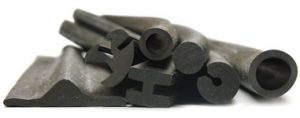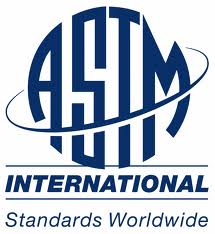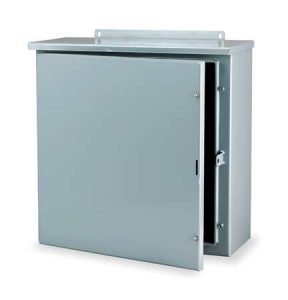 Commercial grade rubber provides sealing and insulation for a wide variety of applications. Compounds such as commercial grade EPDM, silicone, and neoprene also cost less than specialty rubber materials that meet standards, approvals, or regulatory requirements from organizations such as ASTM International, Underwriters Laboratories (UL), and the U.S. Food and Drug Administration (FDA).
Commercial grade rubber provides sealing and insulation for a wide variety of applications. Compounds such as commercial grade EPDM, silicone, and neoprene also cost less than specialty rubber materials that meet standards, approvals, or regulatory requirements from organizations such as ASTM International, Underwriters Laboratories (UL), and the U.S. Food and Drug Administration (FDA).
For engineers, choosing the right rubber means understanding when a specialty material is required, and when a commercial grade rubber is sufficient. Engineers want to make sure that the products they design meet application requirements, but over-specifying an elastomer can incur unnecessary costs. In addition to paying more per unit of material, you may have to buy greater minimum order quantities (MOQs).
In this article from Elasto Proxy, we’ll consider the differences between commercial grade rubber and specialty rubber in terms of some real-world examples. You’ll also learn about some best practices that can strengthen your seal designs.
Asking for ASTM Rubber
 Sometimes, engineers ask for “ASTM rubber” or an elastomer that “meets ASTM D 2000”. There are several challenges here. First, there isn’t a single ASTM test standard for rubber materials. In fact, there are many different and specific testing standards. Do you need an elastomer that meets the thermal conductivity requirements of ASTM F433-02(2014)e1? Maybe you need a gasket material that meets the minimum liquid leakage requirements of ASTM F 37-06(2013) instead. If you don’t need a specialty rubber that meets an ASTM test standard, could you use a commercial grade compound that costs less?
Sometimes, engineers ask for “ASTM rubber” or an elastomer that “meets ASTM D 2000”. There are several challenges here. First, there isn’t a single ASTM test standard for rubber materials. In fact, there are many different and specific testing standards. Do you need an elastomer that meets the thermal conductivity requirements of ASTM F433-02(2014)e1? Maybe you need a gasket material that meets the minimum liquid leakage requirements of ASTM F 37-06(2013) instead. If you don’t need a specialty rubber that meets an ASTM test standard, could you use a commercial grade compound that costs less?
ASTM D 2000 is a published specification that provides buyers and suppliers with a standard way to describe vulcanized elastomers. Asking for “ASTM D 2000 rubber” instead of “ASTM rubber” may seem more specific, but it’s not. ASTM D 2000 covers thousands of elastomers and uses a combination of letters and numbers to “call out” material properties. To use a food-related analogy, simply asking for “ASTM D 2000” rubber is like ordering a sandwich without specifying the bread, fillers, or condiments. Unless you’re incredibly lucky, the sandwich you receive probably won’t be the one you thought you’d ordered.
Asking for UL 50 Gaskets
 UL 50 applies to enclosures for electrical equipment that will be installed and used in non-hazardous locations in accordance with national electrical codes in Canada, the United States, and Mexico. This standard applied to the entire enclosure, however, and not to individual components such as seals, gaskets, and insulation. In fact, UL 50 states that if an individual product has requirements that are at variance with UL 50, then the requirements for the individual product takes precedence.
UL 50 applies to enclosures for electrical equipment that will be installed and used in non-hazardous locations in accordance with national electrical codes in Canada, the United States, and Mexico. This standard applied to the entire enclosure, however, and not to individual components such as seals, gaskets, and insulation. In fact, UL 50 states that if an individual product has requirements that are at variance with UL 50, then the requirements for the individual product takes precedence.
Sometimes, however, engineers ask for “UL 50 gaskets” when a UL 50 approved material is not required. There are several challenges here. First, a well-designed enclosure may be able to meet UL 50’s requirements without the use of more expensive UL-approved gasket materials. Second, there is a separate UL standard (UL 50E) for the environmental construction of qualifying environmental enclosures. During the design process then, engineers may need to account for two separate but related standards. If the electrical enclosure is for an appliance, then UL 94 may apply to your gasket design instead.
Commercial Grade Rubber, Specialty Rubber, and Best Practices
Asking for a “rubber gasket” but including “UL 50 gasket” or “ASTM rubber” on your schematic is also problematic. Ultimately, your part drawing is your contract for gasket fabrication. That’s why Elasto Proxy helps you not just with material selection, but with seal design. If you use a CAD application such as SolidWorks®, we can send you DWG files of standard profiles that you can drop into your design. We can send you PDF versions of our standard profiles, too.
Are you wondering whether you need commercial grade rubber or specialty rubber? Do you have questions about seal design? Don’t wait until the end of your next project to ask for assistance. Otherwise, you may need to use specialty rubber because a commercial grade compound can’t support a design constraint. To learn more, contact Elasto Proxy.










